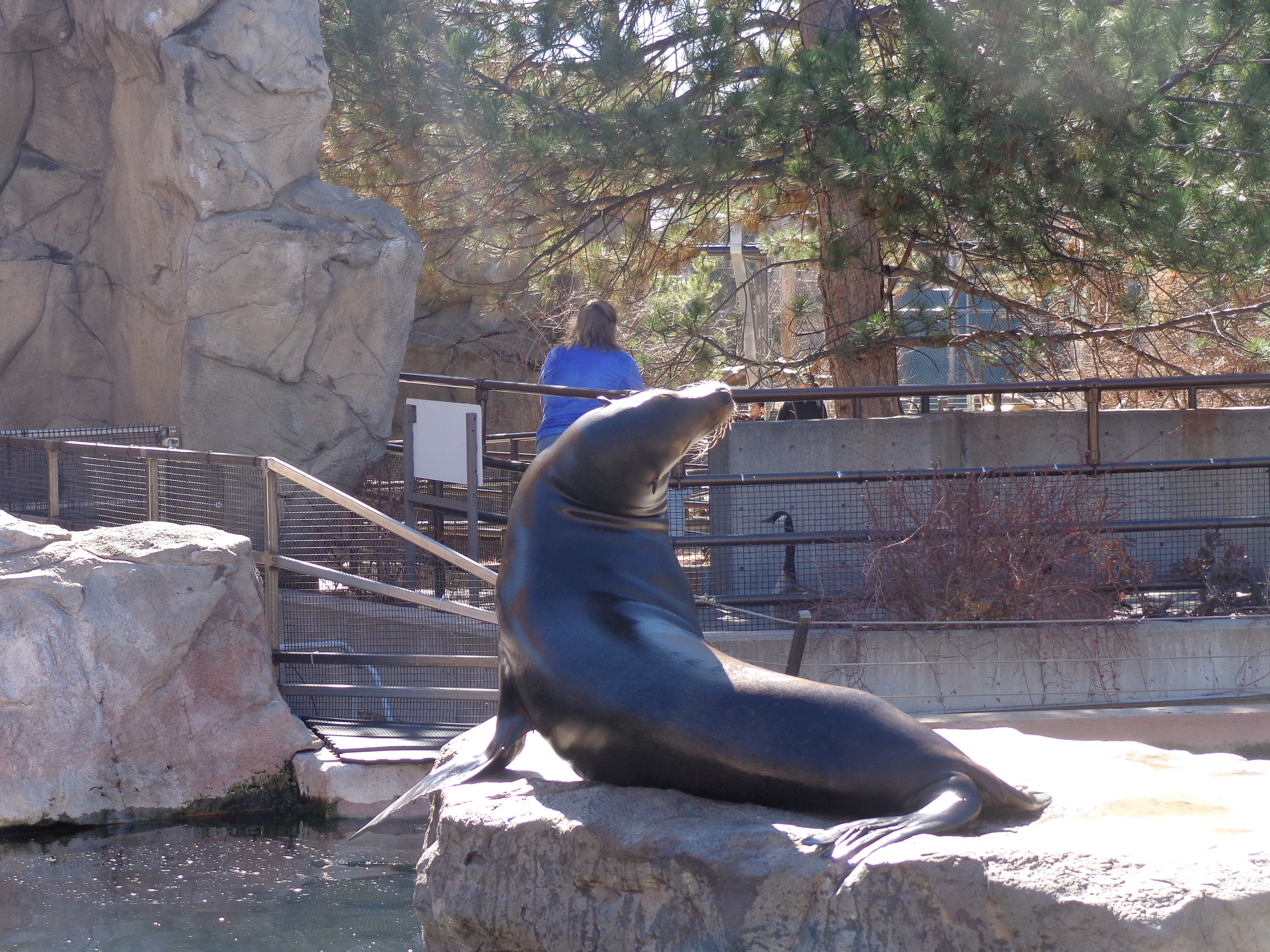The California sea lion enclosure is a big hit with children at the Denver Zoo - how could it not be? Sea lions look a little bit like dogs with flippers. Plus that adorable barking!
But what a lot of people might not know about these deft swimmers is their intense love of food when the temperature drops. That's right! The colder it gets, the more likely sea lions are to eat a lot more and more.
But it's for a good reason, explains Rebecca McCloskey, the curator of carnivores and primates at the zoo.
She told 9NEWS' Becky Ditchfield that they pig out to build up a layer of blubber so they stay warmer in the colder months of the year. The zoo uses the animals' diet as a kind of regulator since in the wild the animals regulate their weight by the necessities of the weather. If they need to lose some fat, they lower their food intake. If they need to pack on a few, they fill up!
The zoo mimics how they behave in the wild by giving them different amounts of food each day. McCloskey said the amount varies based on a few things, including the temperature outside and the animals' interest in eating.
Sea lions know how much fish they need to be comfortable.
While the weather has a big impact on how the animals eat, they're actually pretty adept at acclimating to different temperatures.
They're right at home in the moderate Colorado climate - and even on days when there's a blizzard, the zoo can put the sea lions into smaller - but warmer - tanks to keep them safe from the elements. Luckily that only happens a couple days out of the whole year.
"It's more about water temperature than air temperature," McCloskey said about blizzards.
Sea lions live from Baja California to the south and all the way up to British Columbia in the north. And while they're fine in different temperatures and waters, McCloskey said they do need a little time to get used to the weather.
Can't see the pics? Head over to this link.
They usually live in areas where the water temperature ranges from just below 40 to just above 70.
That's why the Denver Zoo constantly checks the temperature in their large pool throughout the day. Little variations are OK, but they want to give the animals some time to adapt.
Sea lions are helped in that by their body fur, which acts as a kind of wetsuit and keeps the warmer water closer to their bodies and the colder farther away.
These amazing animals like to eat, swim, and bask in the sun. Surely you've seen a photo of a colony of sea lions lounging it up on the shore. It's one of their favorite things to do and it lets them dry out and warm up.
Another cool fact? Sea lions need murky water to be healthy. The ocean isn't usually clear - so the waters at the zoo are the same way. This acts as sunglasses for them to protect their eyes. Otherwise, they might develop eye problems.
HELPFUL LINKS | The Denver Zoo's sea lion fact page
Other tidbits:
- Groups of sea lions have a different name depending on where they are. If they're on land, they're a colony of sea lions. If they're in the water they're called a raft of sea lions.
- Some sea lions can live up to 30 years!
- They don't migrate - despite living from Mexico to Canada. Instead, they usually stay along the same shores.
- Sea lions also communicate underwater! They don't just bark above land.
- While cute, sea lions are usually territorial. According to NOAA, if you see them in the wild you should stay at least 50 yards away from them at all times.
- They look a little goofy walking on land but get these guys in the water and they're some of the best and fastest swimmers! And adorable, if you've seen them pop their head out of the water like a periscope!


